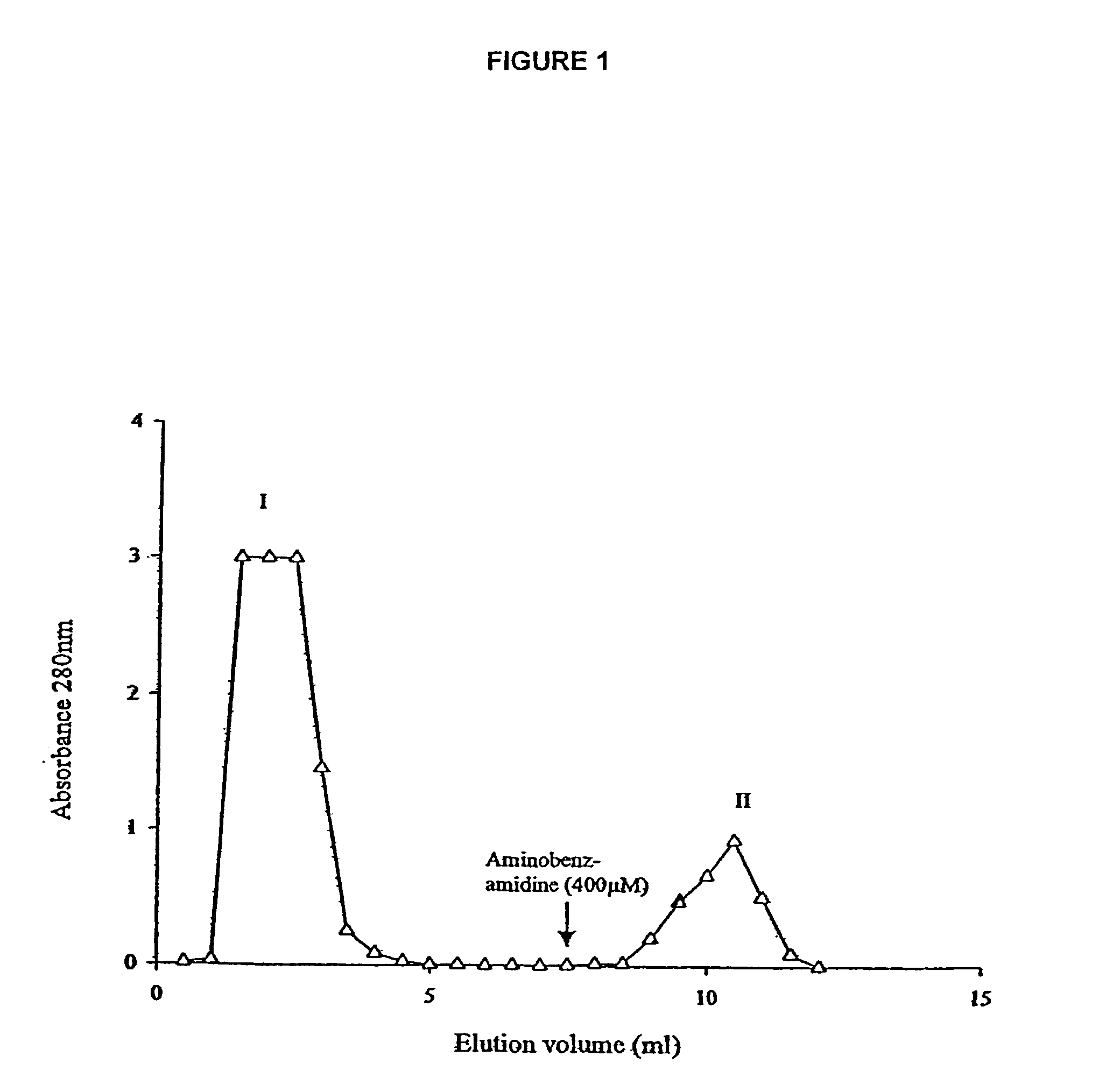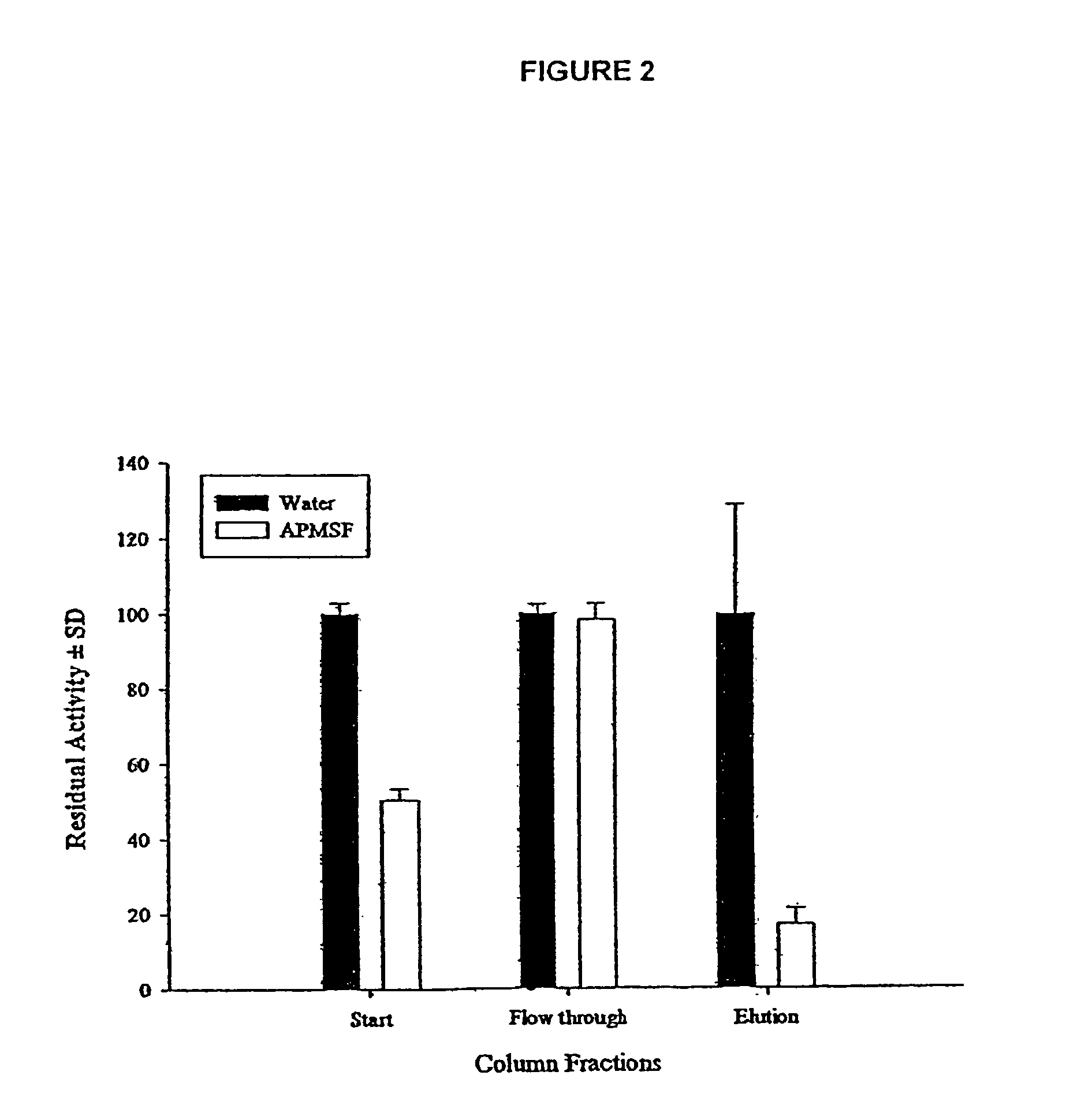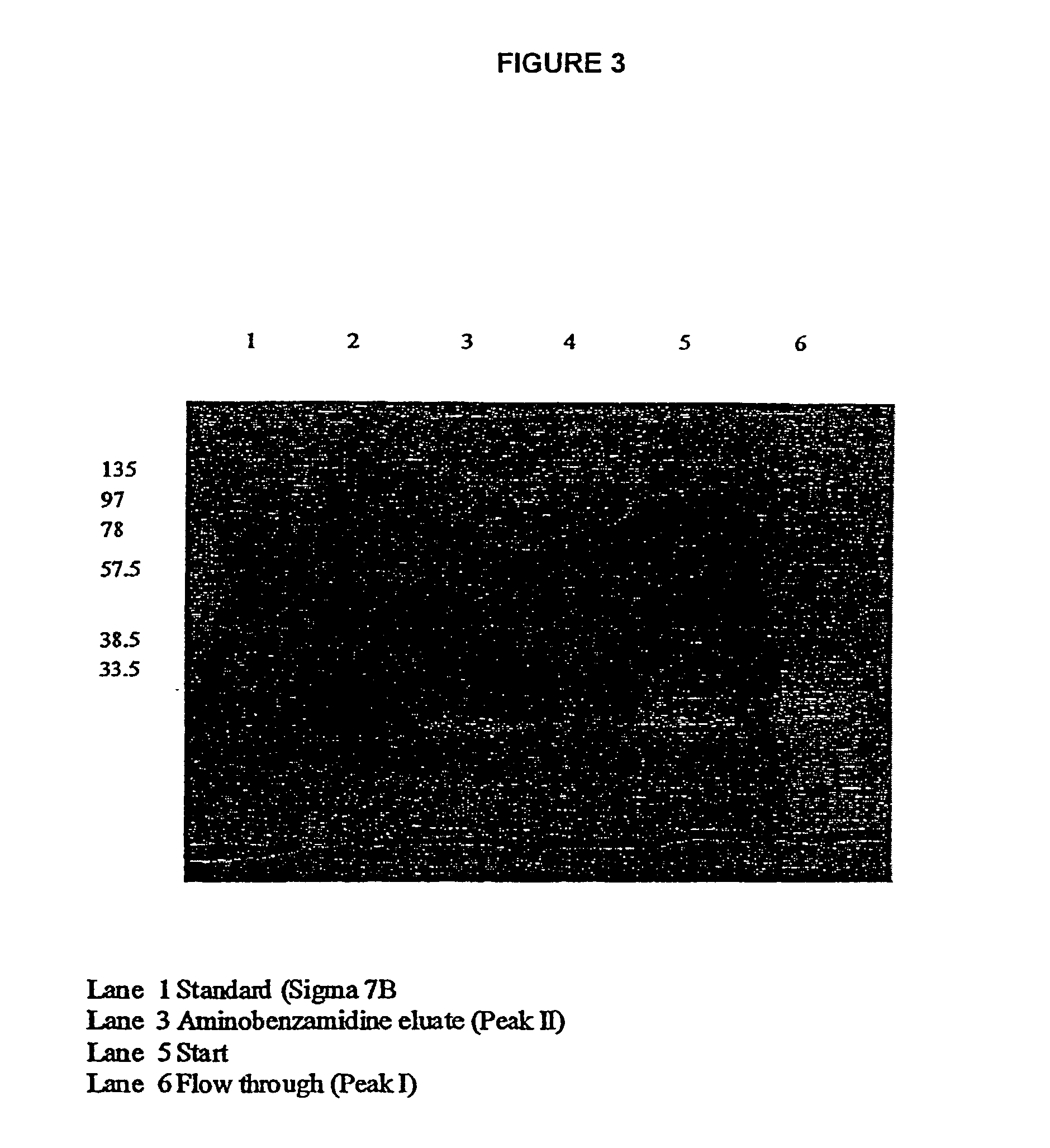Treatment of wounds
a wound and treatment technology, applied in the field of wound treatment, can solve the problems of untreatable wounds, little literature on the way in which these larvae are treated, and only partially effective substances
- Summary
- Abstract
- Description
- Claims
- Application Information
AI Technical Summary
Benefits of technology
Problems solved by technology
Method used
Image
Examples
Embodiment Construction
[0024]The protein of the present invention exists, in nature, in the excretory / secretory (ES) secretions of the larvae of Lucilia sericata.
[0025]The larval ES secretions demonstrate a classical pH optimum of 8.0–8.5 when hydrolysing the fluorescent protein substrate fluorescein isothiocyanate-casein (FITC-casein). By pre-incubating the larval ES secretions, prior to monitoring the hydrolysis of FITC-casein, with the irreversible low molecular weight inhibitors 4-(amidinophenyl) methane sulphonyl fluoride (APMSF; an inhibitor for all trypsin-like serine proteases but not chymotrypsin-like serine proteinases) or with phenyl methanesulphonyl fluoride (PMSF; an inhibitor for all serine proteinases) it is shown that larval ES secretions have two types of serine proteinase activity; a trypsin-like activity and a chymotrypsin-like activity. The dual activity is confirmed by monitoring the hydrolysis of the fluorescent peptide substrates Tosyl-Gly-Pro-Arg-AMC (selective for trypsin-like pr...
PUM
| Property | Measurement | Unit |
|---|---|---|
| pH | aaaaa | aaaaa |
| molecular weight | aaaaa | aaaaa |
| pH | aaaaa | aaaaa |
Abstract
Description
Claims
Application Information
 Login to View More
Login to View More - R&D
- Intellectual Property
- Life Sciences
- Materials
- Tech Scout
- Unparalleled Data Quality
- Higher Quality Content
- 60% Fewer Hallucinations
Browse by: Latest US Patents, China's latest patents, Technical Efficacy Thesaurus, Application Domain, Technology Topic, Popular Technical Reports.
© 2025 PatSnap. All rights reserved.Legal|Privacy policy|Modern Slavery Act Transparency Statement|Sitemap|About US| Contact US: help@patsnap.com



